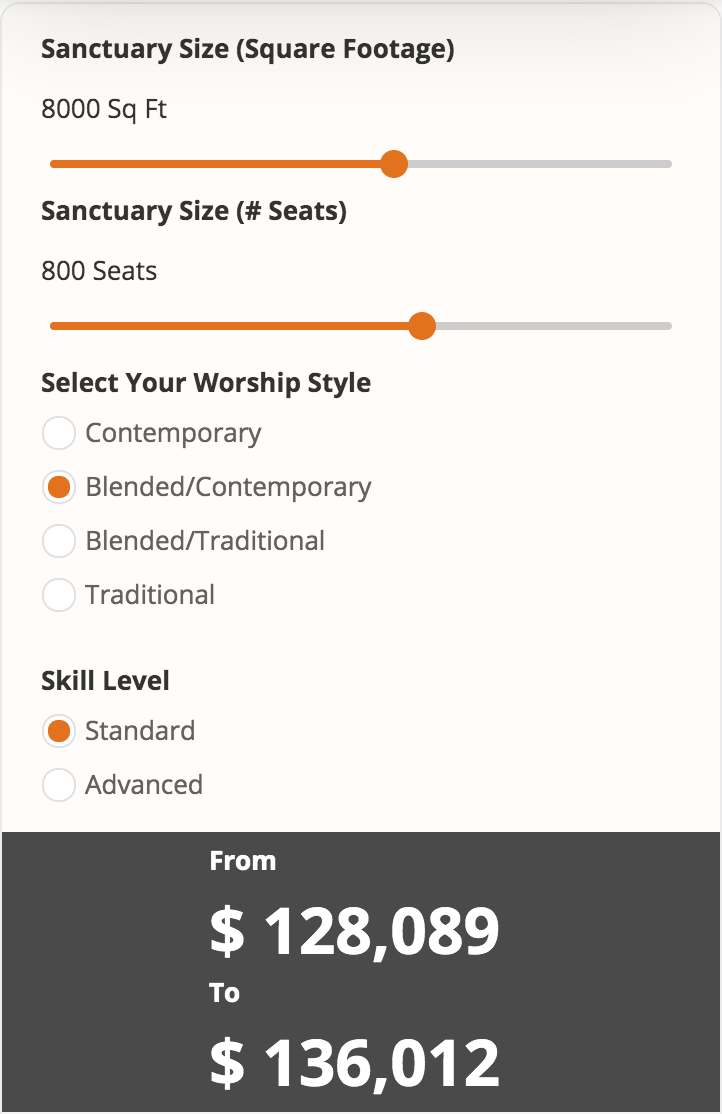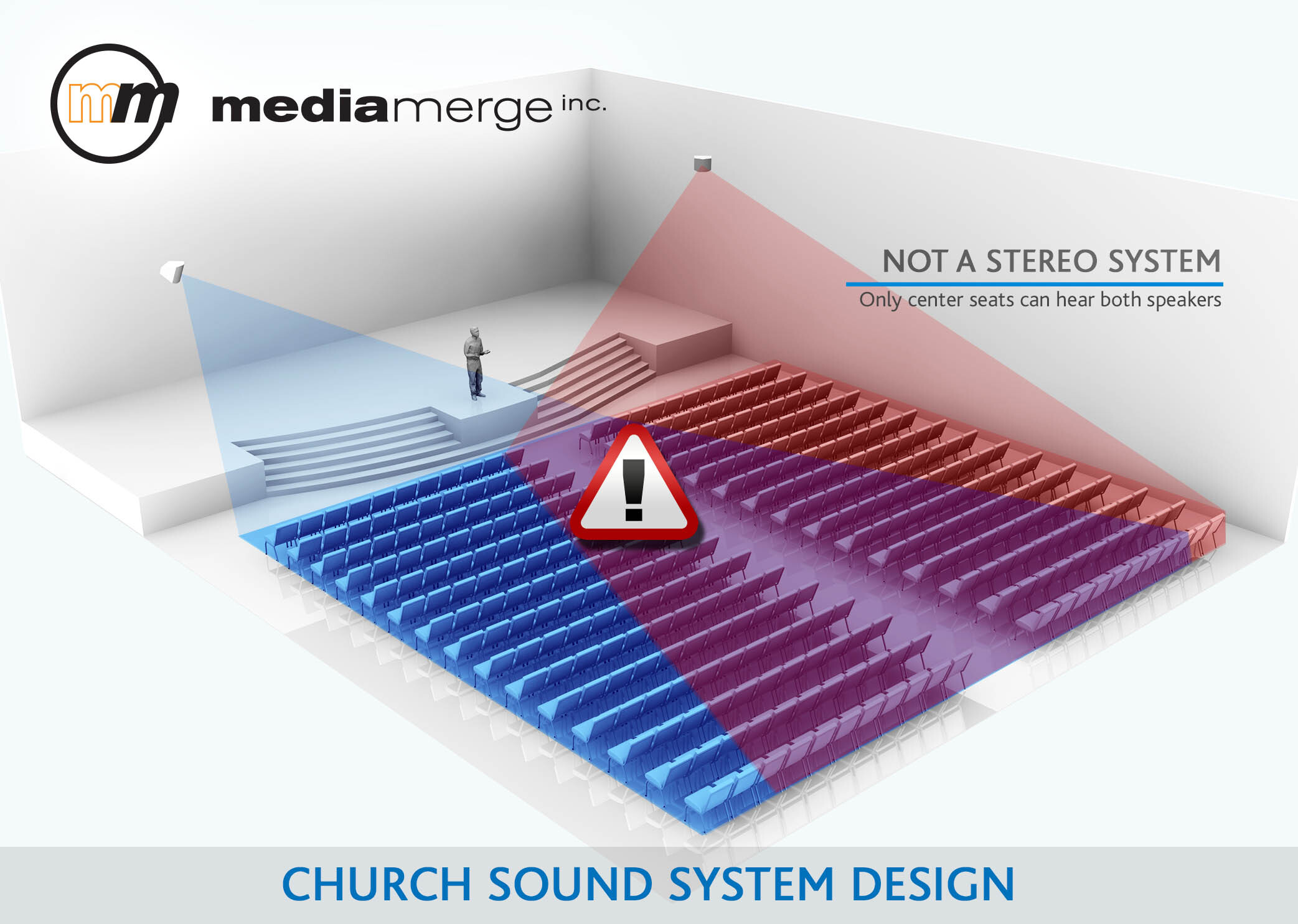SOUND SYSTEM FORMAT
An important element to consider in church sound system design is the system format. A number of factors should be considered when choosing which format is ideal for your church. Architecture will often be the limiting factor, dictating which formats are applicable and often, which ones are simply not advisable in a given room. Other factors include budget and style of presentation.
There are two basic formats and several hybrid formats that are offshoots of those.

MONO SOUND SYSTEM
In a central mono arrangement the entire seating area is covered within +/-3dB from a single channel of audio. In its most basic form a mono system would include a centrally located loudspeaker or array. This type of church sound system was most popular in the 80’s and 90’s, but has largely fallen out of favor for most musical applications.

Pro: The biggest benefit of a mono system is that all of the sound emanates from a single location in the room (the central loudspeaker or array). In this arrangement, there’s only one initial arrival of the sound, and speech intelligibility can be very good if properly designed.
Con: However, the high level of speech intelligibility comes with a trade-off. Musical presentation with a central mono system simply does not sound as big or enveloping as with the other system formats. Central mono is typically a poor choice for modern church sound system design.
STEREO SOUND SYSTEM
A stereo arrangement is not unlike a home stereo or the sound system in a car, using two separate channels of audio: a left and a right. For the system to work properly, the entire seating area is covered within +/-3dB from both the left and right loudspeakers.

Pro: The biggest benefit of a stereo system is the wide, enveloping sound, which is ideal for worship presentation. Instead of being crammed into a single audio channel, the instruments and vocals are spread across the stereo field making it easier to hear them separately. Additionally, by spreading everything out in the stereo field, instruments can typically be more present without covering vocal clarity.
The stereo format is one of the most desirable formats for modern worship presentation.

Con: Stereo format sound systems only work well in rooms with specific aspects of architectural design. Rooms that are extremely wide or that include seating wrapped around the sides of the stage platform are not typically good candidates for a stereo approach.
It’s also worth noting that loudspeaker selection and orientation are critical to designing and installing a proper stereo system. Many church sound systems that are sold as “stereo designs” fail to meet the basic criteria for loudspeaker coverage, with only the center section of seating covered evenly by both the left and right loudspeakers.
LCR (LEFT-CENTER-RIGHT)
A third approach to system format is a hybrid combining both a mono and stereo system. When applicable, this approach can deliver the best of both worlds. This approach is referred to as LCR or Left-Center-Right, and has become very popular in the last decade.
Pro: A properly designed LCR sound system provides exceptional performance for both high-impact music and the spoken word. The ability to pan instruments and vocals between the speaker channels delivers an immense degree of flexibility and creative opportunity in the mix. Simply put, LCR sound systems offer the most engaging sound environment for high-impact worship presentation.
Con: Because room architecture must be able to support both stereo and mono systems, many rooms are not good candidates for LCR systems.
Additionally, because the system operators mix for the left, center and right speaker channels, mixing on an LCR sound system can be more complicated than a conventional stereo or mono system.
The primary drawback of the LCR approach is the cost.
OTHER COMMON HYBRID FORMATS
Distributed Mono/Split Mono – This format is extremely common and uses individual loudspeakers or arrays to cover different sections of the seating area.
Alternating Left/Right Stereo – This format provides stereo coverage using multiple loudspeakers or arrays arranged to alternate between left and right speakers.
WHICH APPROACH IS RIGHT FOR YOUR CHURCH SOUND SYSTEM DESIGN?
There are many factors involved in deciding which format is right for your sanctuary or worship center. Schedule a free consultation below to learn more about which option is right for you.
{{cta('6e707a5f-04a5-4c02-bd1c-6728ef0446ad','justifycenter')}}